Huanqing Cao
Robust Sum-Rate Maximization in Transmissive RMS Transceiver-Enabled SWIPT Networks
Dec 10, 2022Abstract:In this paper, we propose a state-of-the-art downlink communication transceiver design for transmissive reconfigurable metasurface (RMS)-enabled simultaneous wireless information and power transfer (SWIPT) networks. Specifically, a feed antenna is deployed in the transmissive RMS-based transceiver, which can be used to implement beamforming. According to the relationship between wavelength and propagation distance, the spatial propagation models of plane and spherical waves are built. Then, in the case of imperfect channel state information (CSI), we formulate a robust system sum-rate maximization problem that jointly optimizes RMS transmissive coefficient, transmit power allocation, and power splitting ratio design while taking account of the non-linear energy harvesting model and outage probability criterion. Since the coupling of optimization variables, the whole optimization problem is non-convex and cannot be solved directly. Therefore, the alternating optimization (AO) framework is implemented to decompose the non-convex original problem. In detail, the whole problem is divided into three sub-problems to solve. For the non-convexity of the objective function, successive convex approximation (SCA) is used to transform it, and penalty function method and difference-of-convex (DC) programming are applied to deal with the non-convex constraints. Finally, we alternately solve the three sub-problems until the entire optimization problem converges. Numerical results show that our proposed algorithm has convergence and better performance than other benchmark algorithms.
Intelligent Reflecting Surface Empowered UAV SWIPT Networks
Jul 23, 2021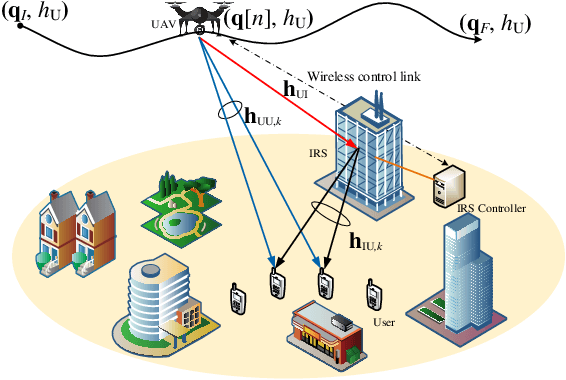
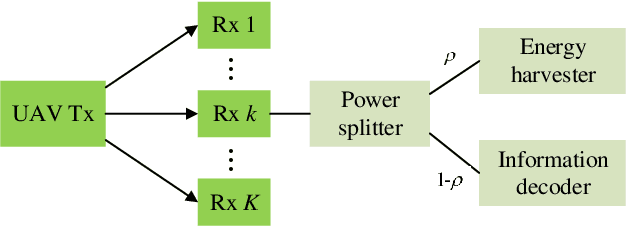
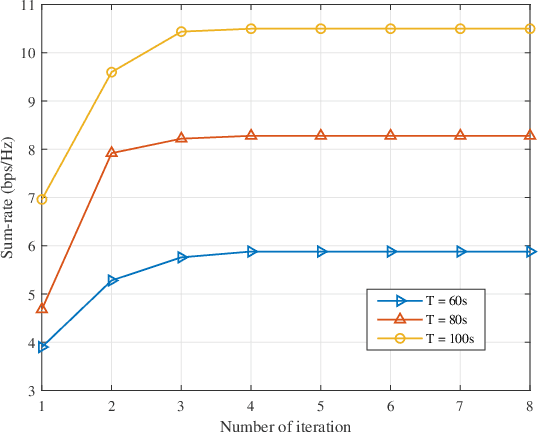

Abstract:Aiming at the limited battery capacity of a large number of widely deployed low-power smart devices in the Internet-of-things (IoT), this paper proposes a novel intelligent reflecting surface (IRS) empowered unmanned aerial vehicle (UAV) simultaneous wireless information and power transfer (SWIPT) network framework, in which IRS is used to reconstruct the wireless channel to enhance the energy transmission efficiency and coverage of the UAV SWIPT networks. In this paper, we formulate an achievable sum-rate maximization problem by jointly optimizing UAV trajectory, UAV transmission power allocation, power splitting (PS) ratio and IRS reflection coefficient under a non-linear energy harvesting model. Due to the coupling of optimization variables, this problem is a complex non-convex optimization problem, and it is challenging to solve it directly. We first transform the problem, and then apply the alternating optimization (AO) algorithm framework to divide the transformed problem into four blocks to solve it. Specifically, by applying successive convex approximation (SCA) and difference-convex (DC) programming, UAV trajectory, UAV transmission power allocation, PS ratio and IRS reflection coefficient are alternately optimized when the other three are given until convergence is achieved. Numerical simulation results verify the effectiveness of our proposed algorithm compared to other algorithms.
Beamforming Design and Power Allocation for Transmissive RMS-based Transmitter Architectures
Jul 23, 2021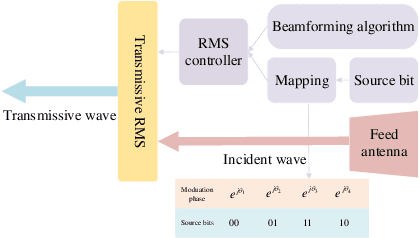
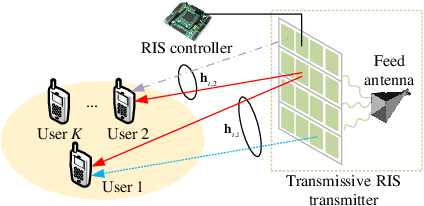
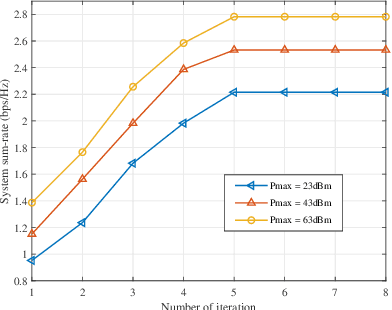

Abstract:This letter investigates a downlink multiple input single output (MISO) system based on transmissive reconfigurable metasurface (RMS) transmitter. Specifically, a transmitter design based on a transmissive RMS equipped with a feed antenna is first proposed. Then, in order to maximize the achievable sum-rate of the system, the beamforming design and power allocation are jointly optimized. Since the optimization variables are coupled, this formulated optimization problem is non-convex, so it is difficult to solve it directly. To solve this problem, we proposed an alternating optimization (AO) technique based on difference-of-convex (DC) programming and successive convex approximation (SCA). Simulation results verify that the proposed algorithm can achieve convergence and improve the achievable sum-rate of the system.
Robust Beamforming Design and Time Allocation for IRS-assisted Wireless Powered Communication Networks
May 13, 2021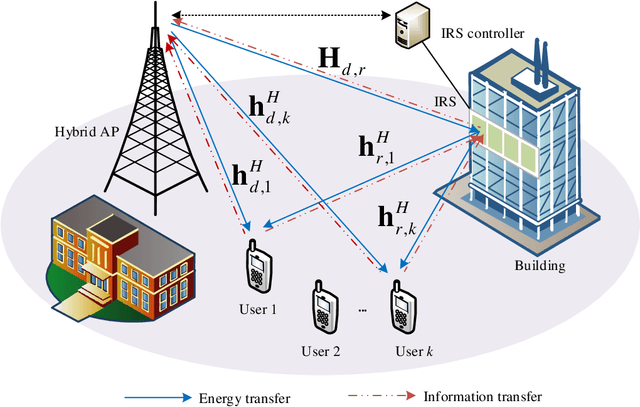

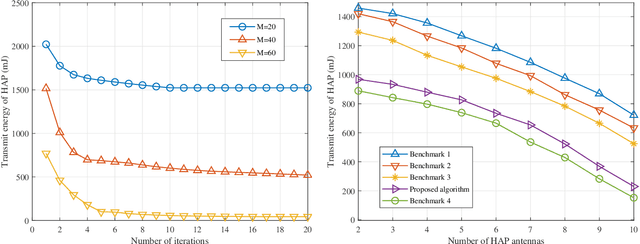
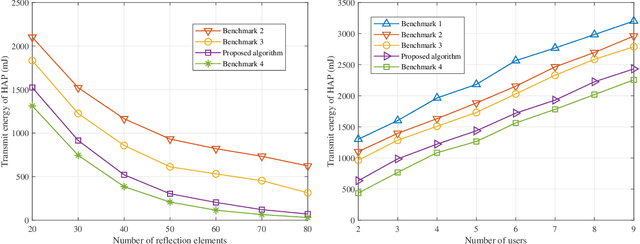
Abstract:In this paper, a novel intelligent reflecting surface (IRS)-assisted wireless powered communication network (WPCN) architecture is proposed for low-power Internet-of-Things (IoT) devices, where the IRS is exploited to improve the performance of WPCN under imperfect channel state information (CSI). We formulate a hybrid access point (HAP) transmission energy minimization problem by a joint design of time allocation, HAP energy beamforming, receiving beamforming, user transmit power allocation, IRS energy reflection coefficient and information reflection coefficient under the imperfect CSI and non-linear energy harvesting model. Due to the high coupling of optimization variables, this problem is a non-convex optimization problem, which is difficult to solve directly. In order to solve the above-mentioned challenging problems, the alternating optimization (AO) is applied to decouple the optimization variables to solve the problem. Specifically, through AO, time allocation, HAP energy beamforming, receiving beamforming, user transmit power allocation, IRS energy reflection coefficient and information reflection coefficient are divided into three sub-problems to be solved alternately. The difference-of-convex (DC) programming is applied to solve the non-convex rank-one constraint in solving the IRS energy reflection coefficient and information reflection coefficient. Numerical simulations verify the effectiveness of our proposed algorithm in reducing HAP transmission energy compared to other benchmarks.
 Add to Chrome
Add to Chrome Add to Firefox
Add to Firefox Add to Edge
Add to Edge